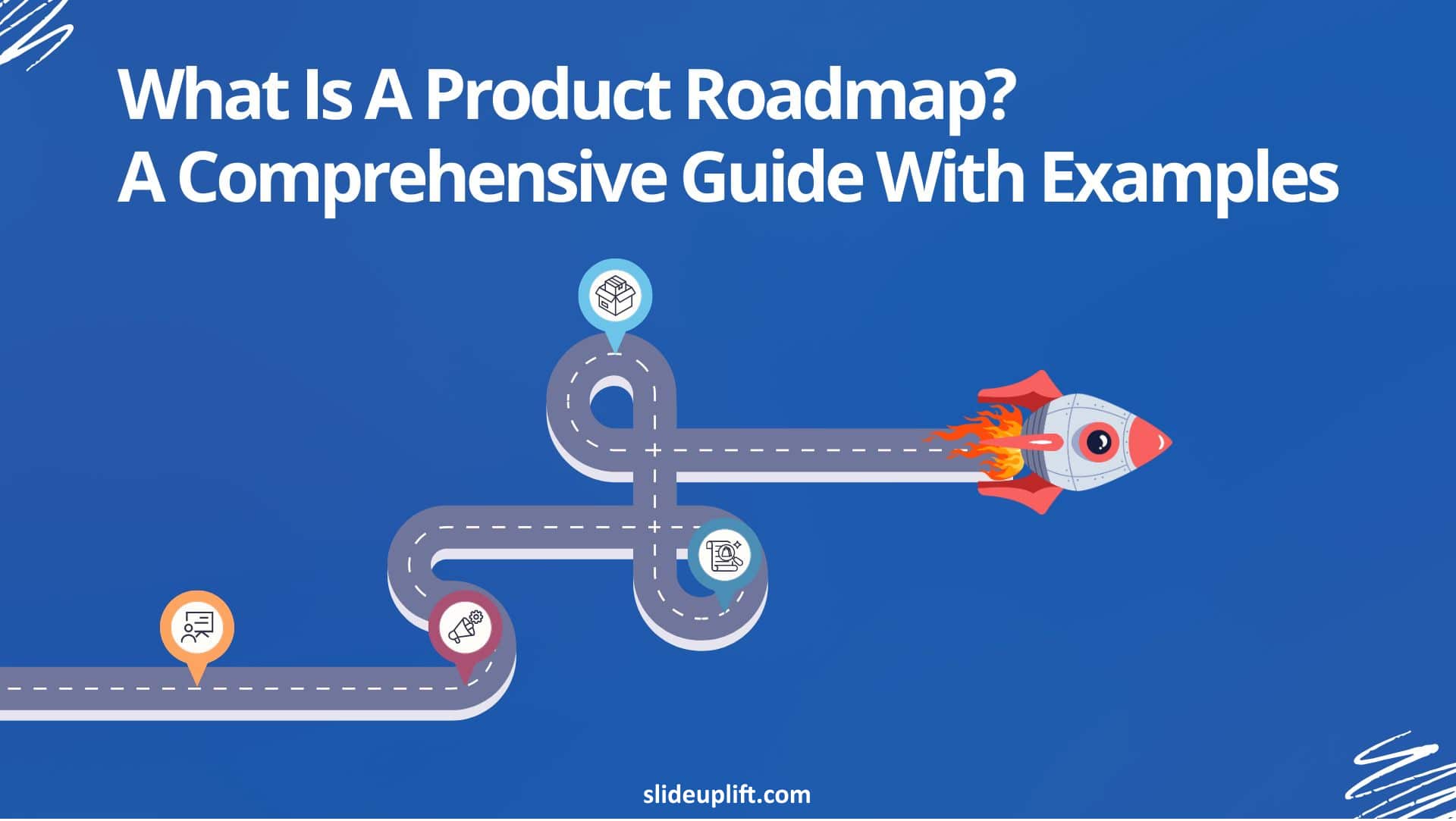What Is A Project Roadmap? Here’s How To Create It!
For startups and businesses, delving into the specifics of project implementation can take an extraordinary amount of time. Typically, this results from inadequate project planning at the outset. It usually happens due to insufficient project planning in the initial stage.
A Project roadmap gives stakeholders and project teams a comprehensive picture of the route they need to follow to accomplish the goals. It lowers the likelihood of inadequate project planning. Gaining the knowledge and skills necessary to create a project roadmap equips your business to handle any project-related problems in the future and streamlines the whole process.
You will benefit from this article’s overview of project roadmaps, what is roadmap in project management, why they are crucial, and how to create them.
What Is A Project Roadmap?

A project roadmap is a concise, high-level summary of a project’s key components. You can share this document with others to give them a brief overview of the job’s objectives, significant checkpoints, essential deliverables, dependencies, and potential hazards.
This document makes it simple for team members and project stakeholders to comprehend the reasons for selecting a project. More importantly, it guides execution by outlining the various stages of a project. It explains all the steps in proper order, making it easier for team members to follow.
Why Do You Need a Project Roadmap?
To effectively manage a project, you need metrics with timelines. These things help you track the project and make necessary changes to ensure timely completion. It is the primary reason why you need a Project roadmap.
Simply put, a roadmap is essential for project management because it is one of the views on a dashboard that stakeholders use to monitor project progress and evaluate strategic details without sifting through updates, comments, graphs, and charts.
A project roadmap is needed to reduce risk and guarantee timely completion. Keeping stakeholders informed and ensuring everyone is on the same page during a project’s length is another excellent use of roadmaps.
Another reason to use a roadmap slide is to manage project dependencies and different stakeholders’ expectations. The framework guides teamwork and communication, ensuring adherence to the predetermined schedule and deliverables that teams must complete by the deadline.

Who Needs A Project Roadmap?
Road mapping is a tool that managers use in various cross-functional groups to clarify expectations and assign responsibilities to team members. Here are a few instances:
- A business roadmap is a tool executives use to convey company-wide objectives and strategic initiatives.
- IT managers develop a technology roadmap to visualize enhancements to current architecture, technology, and infrastructure procedures.
- Project managers rely on project roadmaps to provide a schedule for project objectives, tasks, and assignments.
- Product managers are responsible for keeping a product roadmap up to date, emphasizing implementing plans and sharing the product vision.
- Marketing managers create a marketing roadmap to help teams coordinate around integrated marketing plans and all associated initiatives.
What To Include In It?
It’s necessary to comprehend the primary elements of this document if you want to create a roadmap for a project. Below are some components that are typically included in a Project Roadmap:
- Project’s scope: It is a planning section that contains details on the primary goals of the firm, major tasks, total expenses, and the estimated completion dates.
- Deliverables: It’s the outcome your group hopes to accomplish at the end of the project. It could be a piece of software, a document, or a tangible item.
- Important turning points: These are the points that divide important project phases.
- Potential dangers: Recognizing potential obstacles before the project even begins is critical. You can stay within your budget, workload, timetable, and other constraints if you include this section in your roadmap.
- Deadline/Proper Schedule: Establishing the proper order in which tasks and deadlines are to be accomplished for a project to be successful is vital.
- Key contacts: The phone numbers of the project representatives can be included for easy access if participants have an urgent need to discuss. It facilitates working together and communicating with other departments and other parties.

Project Roadmap Vs. Project Management Plan
A project roadmap and a project management plan have different functions in project management. A project management plan is a detailed document that describes the general strategy, procedures, roles, and duties involved in project management.
It contains information about communication, risk management, budget, scheduling, and project scope. On the other hand, a project roadmap is a graphic tool that emphasizes important goals and milestones while communicating the project’s high-level strategic direction.

Project Roadmap Vs. Project Plan
Project plans and project roadmaps are two different but equally significant tools. A project roadmap provides a general outline of the project’s path, while a project plan is utilized for planning, overseeing project execution, and maintaining control.
You will document the timeline, scope, and cost baselines in a project plan. This document also tracks the communication plan and decisions about the project. On the other hand, the project roadmap continuously updates the present status of numerous revisions to the project plan, which serves as a working document.

Project Roadmap Vs. Product Roadmap
A project roadmap provides a schedule for important deliverables and describes the strategic objective and significant project milestones. A product roadmap, on the other hand, focuses on how a product will be developed and improved over time. In keeping with the product development life cycle, it describes the features, releases, and enhancements required in the product. While both roadmaps involve planning and visualization, their roles differ within the broader context of project and product management.

Project Roadmap Vs. Gantt Chart
Most Project Managers use Gantt charts to show the project timetable. Gantt chart is another form of visual Plan, and it provides more details than a project roadmap, which only displays the broad beginning and ending dates for certain stages or tasks.
They contain the specifics of assignments, recipients, and deadlines. Consider the Gantt chart to be the visual representation of the exact details that need to be delivered and the project roadmap to be the visualization of your overarching plans. In contrast, you can create roadmaps by following a similar structure to the Gantt Chart, but they are not as detailed.

Objectives Of A Project Management Roadmap
Here are some top objectives of a project roadmap that you must know to utilize it more effectively:
1. Responsibility
As a project manager, customers, coworkers, and company executives depend on you. Ensure everyone follows the plan by clearly communicating what you will deliver and when. A project roadmap comes in handy for all this stuff.
2. Alignment
All members must align toward a common goal and vision to achieve significant accomplishments. You can align various teams, portfolios, or business divisions using your roadmap to ensure everyone knows their tasks and overall team vision.
3. Clarity
Why and for what purpose are you working? You can ensure that the team concentrates on the tasks that will get you closer to your objectives by outlining your strategic goals clearly on your project roadmap and then connecting your work to that plan.
4. Interaction
Transparency is essential in any project. You can use a project roadmap to communicate your plans with teammates to provide guidance, visualize timeliness, foresee difficulties, and initiate discussion.
5. Coordinate
Large or complicated projects necessitate cooperation between several organizational groupings for efficient working. With a project roadmap, you can track dependencies and identify bottlenecks, ensuring your project stays on schedule.

How to Create a Project Roadmap?
Here are some common steps that you can follow to create a project roadmap:
1. Identify the Project
Consider your goals, your deliverables, and the difficulties involved. Avoid delving into specifics of implementation just from the start. Instead, concentrate on laying the groundwork for the subsequent planning. For example, you might decide that you want to improve the user experience on your website. The deliverables for this task may involve creating client personas, developing a new style system to enhance your SERP Rank, and optimizing coding.
2. Establish a Schedule
You are now familiar with the project’s objectives and have planned the necessary steps for completion. Next, consider the timelines – determine the duration of your project. Ask yourself if it will take a few weeks or longer. How many months will the project take? Don’t stress over hitting the exact target with your figures. Reasonable estimates are acceptable as projects are constantly changing. Knowing what kind of commitment you’re getting into will help you manage resources appropriately.
3. Divide Everything Into Its Components
These days, cross-functional initiatives are the norm. Various teams collaborate to achieve a shared objective. Thus, it makes sense to divide the project into phases, even if you don’t have a specialized team focusing on a particular issue. Ultimately, you have something more tangible than a heap of goals. Contextualizing advancement gets more simpler. This phase allows you to build sections and add tasks (deliverables) to them.
4. Create a Timeline With the Deliverables
By the time you reach this stage, you will have gathered all the necessary information to create an actual roadmap. Once the project deliverables and timetable are clear, you can put them into visual form. You can complete such mapping using Excel or even with just a pen and paper.
5. Establish Dependencies & Milestones
Milestones aid in maintaining motivation and pacing complex endeavors. They act as dopamine boosters to keep your group motivated. Furthermore, achieving goals makes stakeholders happy. But exercise caution when setting milestones—don’t go overboard. Only include them in the project schedule when it seems appropriate. Following that, portray dependencies among deliverables as accurately as possible. This process helps identify crucial project components that impact progress across multiple areas.
6. Obtain Stakeholder Approval
At this point, you have completed most of the roadmap. After obtaining feedback from stakeholders, addressing any identified issues through iterations, and gaining their approval through the repeated process, you can present the final version to your team.
7. Keep Updating It
This is the final step, which never truly finishes. Since projects are dynamic, ever-evolving entities, roadmaps must also adapt. Thus, be ready to polish your design as and when needed.
Types of Project Roadmap
After learning how to make a project plan, it’s essential to understand the various kinds of roadmaps that are available:
1. Agile Roadmap: Teams can divide their projects into brief sprints and swiftly modify tasks as needed when working in an agile project management environment. Teams can also use it to monitor progress and make quick adjustments.
2. Gantt Chart: Often used as a project roadmap, Gantt charts show the tasks, deliverables, and milestones associated with a project. Teams can easily comprehend their projects with the help of these charts, which are updated or changed in real time.
3. Timeline-based Roadmap: This roadmap tracks objectives, assets, tasks, and milestones by concentrating on the timeframe. This feature allows teams to quickly compare their anticipated timetables with the actual results and make necessary adjustments.
4. Strategic Roadmap: A strategic roadmap aims to provide teams with a broad overview of the project’s aims and objectives, along with a long-term perspective. It also monitors development and ensures the completion of every activity to achieve the final result.

Examples Of Project Roadmaps
Here are some project management roadmap examples:
E-Learning Course Development Project Roadmap:
The e-learning course development project commences by defining objectives, assembling a curriculum team, setting a budget, and establishing communication channels in the initiation phase. The subsequent two months involve planning, including developing a detailed course outline, selecting e-learning platforms, designing assessments, and creating a production schedule.
Months 2-4 encompass the development phase, creating multimedia content, implementing interactive elements, and finalizing based on feedback from a pilot test. Month 4 focuses on thorough quality assurance and testing. The fifth month marks the launch, with deployment, communication, and feedback collection.
The evaluation and improvement phase, spanning months 6-8, analyzes course effectiveness, reviews participant feedback, and updates content strategically for ongoing maintenance and improvement.

Project Development Roadmap for a Tech Startup:
The tech startup sets out on a product development roadmap, initiating the conceptualization phase by defining the product vision and conducting market research in months 1-2. Months 2-4 involve design and prototyping, crafting wireframes, and finalizing specifications based on user input. Development and coding follow in months 4-8, addressing technical challenges.
Testing and quality assurance in months 8-9 ensure functionality and compatibility. The product is launched in month 10 with a robust marketing strategy, followed by post-launch support in months 11-12, focusing on customer queries, feedback collection, and planning for regular product updates and iterations.

Best Project Roadmap Templates By SlideUpLift
SlideUpLift is a comprehensive presentation platform offering a wide range of well-crafted PowerPoint Presentation templates, visuals, and diagrams to improve presentations’ visual appeal and efficacy. SlideUpLift offers ready-to-use templates for business, marketing, education, and other purposes, catering to various industries and presentation demands.
It helps users to rapidly and effectively produce powerful presentations with an emphasis on creativity and simplicity. Here are some top project management roadmap templates by SlideUpLift that you should consider using:
- The Agile Product Roadmap Presentation Template is a planning tool that is intended to show how a product is strategically developed over a year. The template is broken down into monthly segments and has three vertical columns with labels. The Columns are also given each month to indicate different stages of agile development, such as Quality Assurance, project milestones, and Sprint Planning.
- The Strategy Roadmap 03 PowerPoint template is an adaptable tool for outlining and monitoring strategic efforts inside an organization. The progress and status of different strategic components are shown visually in this template. You can update and modify each cell to meet other organizations’ requirements, making it easy to adapt to diverse deadlines, deliverables, and evaluation standards.
- The Product Roadmap template has three main columns: “Pre Launch,” which covers the period from -24 to 0 months before launch; “Post Launch,” which covers the period from 0 to 24 months after launch; and “Growth Phase,” which focuses on the time after +24 months after launch. This template visually represents significant events and tasks throughout the product’s lifetime, making it useful for strategic planning. Throughout the product’s life, teams can use this roadmap as a guide to help them align resources and coordinate efforts.
With the carefully designed project roadmap templates from SlideUpLift, you can make your project presentations stand out. SlideUpLift provides PowerPoint and Google Slides templates that can be used for managing agile projects, describing thorough project timetables, or summarizing strategic ideas.
Conclusion
You now understand the stages of creating a project roadmap and how to proceed. Making a clear, understandable, and efficient plan takes a lot of work. Still, you won’t have to wait long for positive outcomes if you follow all the instructions in this article.
A well-crafted project roadmap keeps all parties involved informed and contains all the information needed for project implementation. In addition, using templates that captivate your audience with visually impactful project narratives is also vital, apart from just learning how to make one. Therefore, check out SlideUpLift today to access presentation resources that will transform how you communicate your projects.
FAQs
-
What is a Project Roadmap?
A project roadmap is a visual guide outlining a project’s strategic plan, including goals, milestones, and timelines.
-
Who Needs a Project Roadmap?
Project managers, team members, stakeholders, and executives benefit from project roadmaps as it helps with communication, coordination, and strategic decision-making.
-
How to Create a Project Roadmap?
The steps to create a project roadmap include the following:
Define goals
Identify milestones
Set timelines
Choose a visual format,
Add details,
Regularly review and revise for accuracy.
-
What are the types of Project Roadmaps?
Common types of project roadmaps include strategic, agile, product, and IT roadmaps, each tailored to specific project needs and methodologies.
-
What is a Roadmap in Project Management?
A roadmap in project management is a visual representation that illustrates a project’s strategic direction, major milestones, and timelines. It is a communication tool to convey the project’s overall plan and goals to stakeholders, team members, and other involved parties.
















